14 gadgets that perfectly trace our relationship – and obsession – with tech
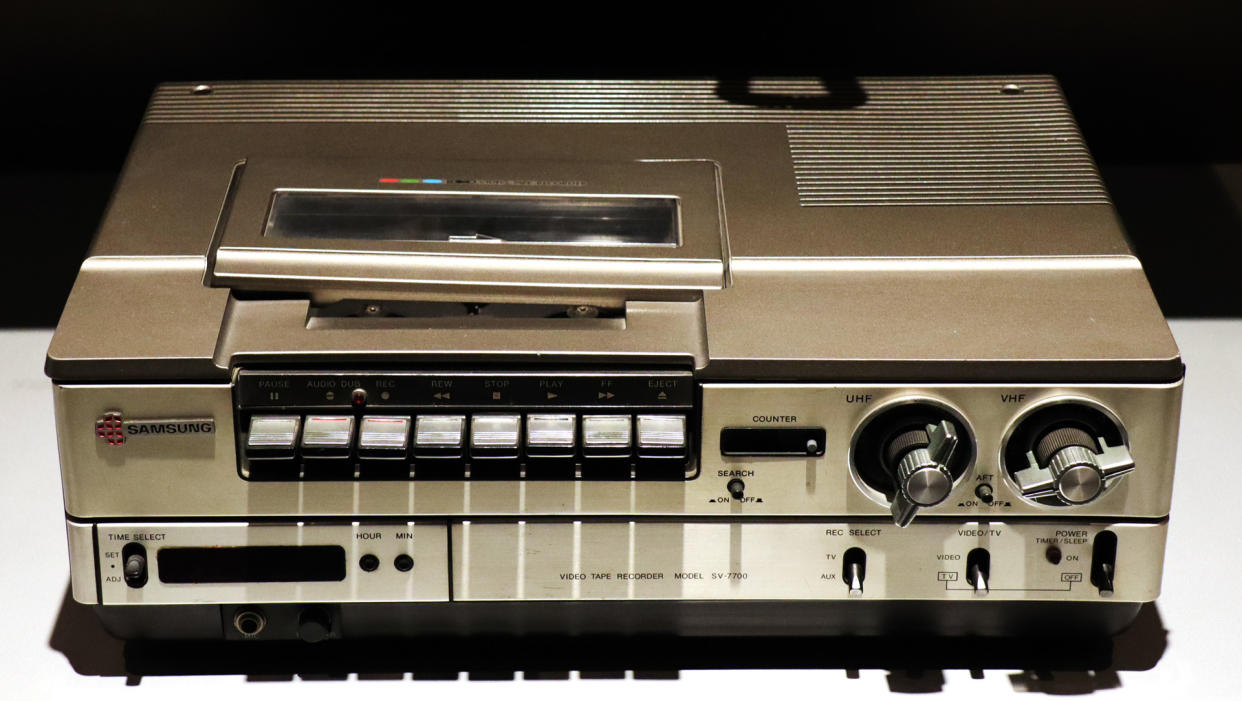
Believe it or not, the sleek smartphone you currently hold is a direct descendant of some pretty basic technology.
I've been in South Korea for a few days for the latest Samsung Unpacked, and I've spent inordinate amounts of time surveying the number of best iPhones versus best Samsung handsets. I can quickly identify the difference between the Samsung Galaxy phone in a subway rider's hand and the iPhone 14 Pro in another's and noted how Samsung phones outnumber iPhones in South Korea 5-to-1. That factoid, though, is less interesting when you consider that these handsets are now all so similar that perhaps consumers are not making much of a choice.
I realize that I miss a time when technology was large, ungainly, and maybe even unintentionally ugly. So when I had a chance to take a trip down memory lane at Samsung's Innovation Museum in Suann, South Korea, I jumped at it.
The products on show are as varied as they are specialized. Some do just one thing. All of them were defined by the technical limits of their eras. The screens might be fat, and the operation partially mechanical, but they all made their mark, and laid the groundwork for what was to come.
I saw in the halls of Samsung's museum a diverse collection of consumer electronics, including a parade of smartphones that, to be honest, got much less interesting when we got to the all-screen slab-phone era.
Below is a look at my favorite finds, and how they influenced the technology we carry and use today – and, yes, I can actually remember using gadgets that looked just like these.
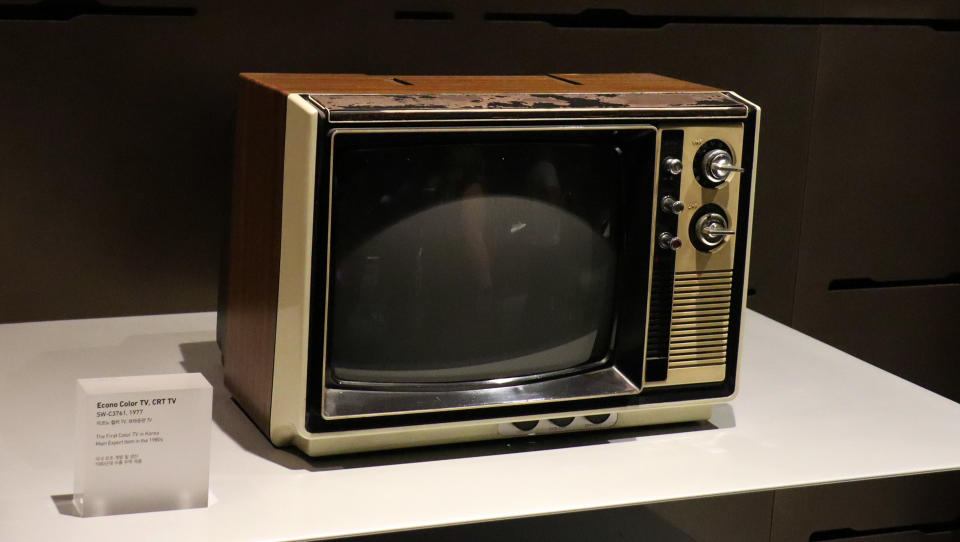
Perhaps you remember your last tube TV, or maybe you've grown up in the golden age of flat screens. In the last century, TVs like this 1977 Econo Color TV (the first color TV in Korea) were commonplace. As for the knobs on the front, that was how we changed the channel and raised or lowered the volume (unless you were lucky enough to own a bulky remote).
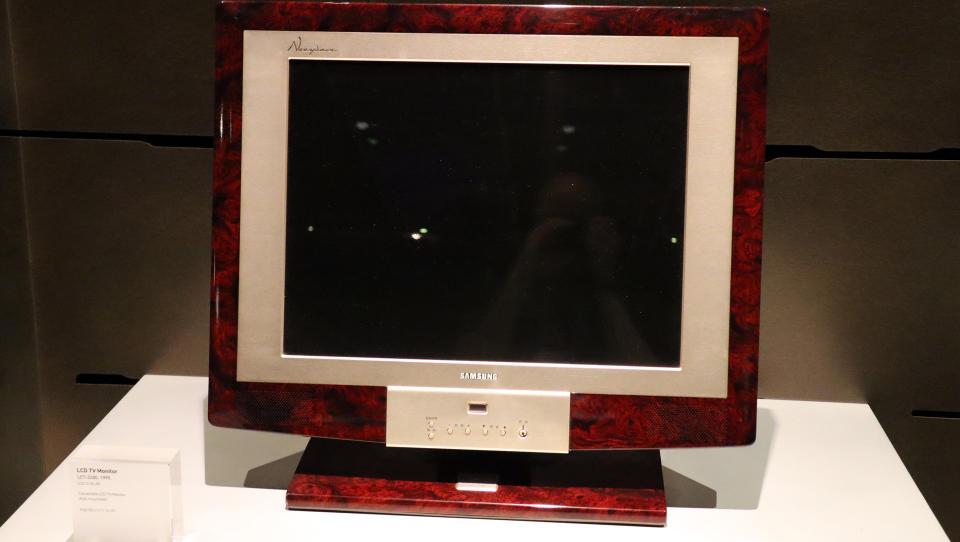
Almost 20 years later, our TVs and computer screens were replaced by flatter, though not necessarily more attractive, LCD panels. This 1995 dual-purpose TV/Monitor was even mountable. The fake wood grain was apparently a selling point.
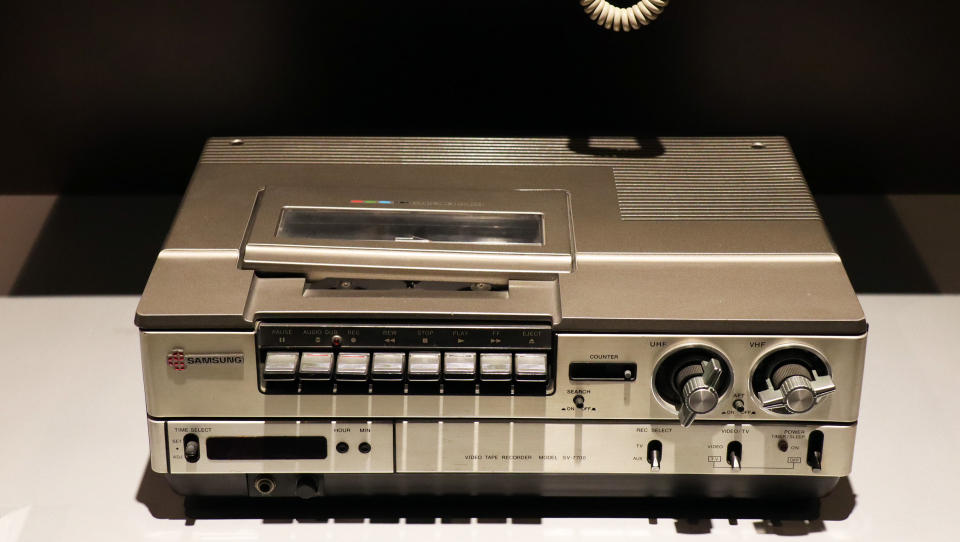
This classic, 1979 VHS-tape-based VCR might be a little worse for the wear but it definitely sparked the most nostalgia in me. Samsung didn't sell these in the US back in the 1970s, but my 1979 Magnavox VCR looked exactly like it. The VHS tape, by the way, loaded into the top, which may be why it looks like that. Gosh, will you look at all those knobs and buttons?
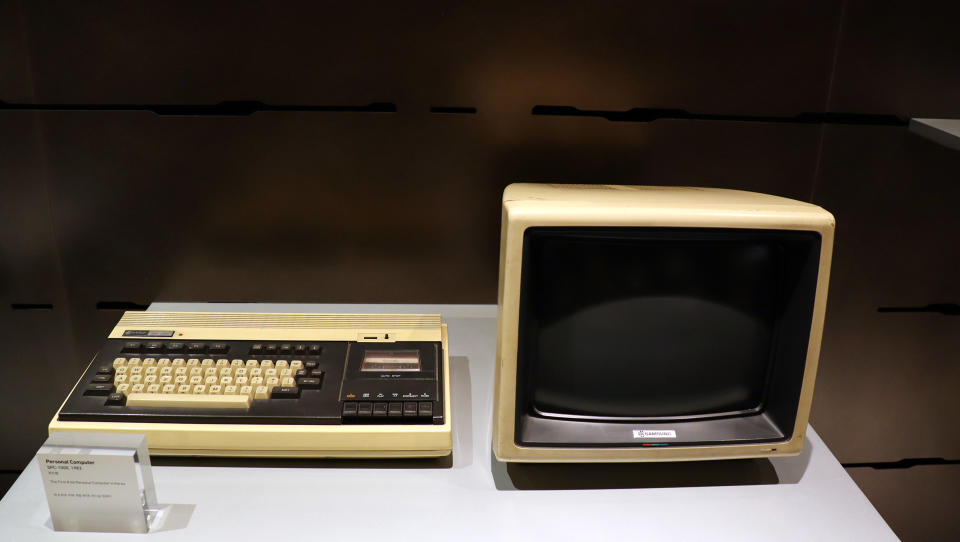
If you had a personal computer in the late 1970s or early 1980s, there's a good chance it looked like this. Samsung's 1983 SPC-1000 looks quite a bit like my Commodore 64. This 8-bit one, though, didn't use 5.25-inch floppy disks, instead relying on an even more antiquated cassette tape data storage and programming system.
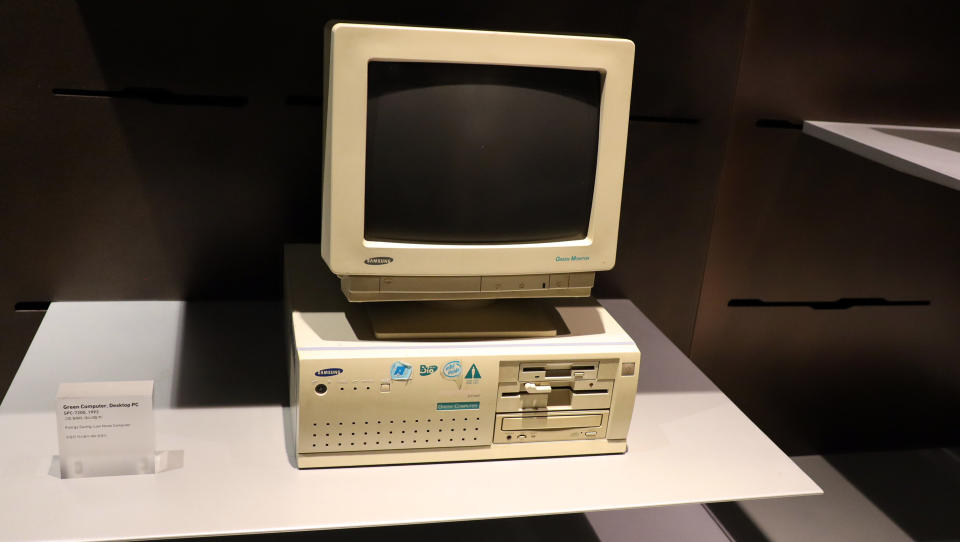
Fast forward to 1993 and we find Samsung's classic Green Computer Desktop PC, which apparently promised quiet operation and even energy savings – quite forward-thinking for the time. Note that it included 5.25-inch and 3.5-inch floppy drives. Within a few years, no PC would still include the former media drive.
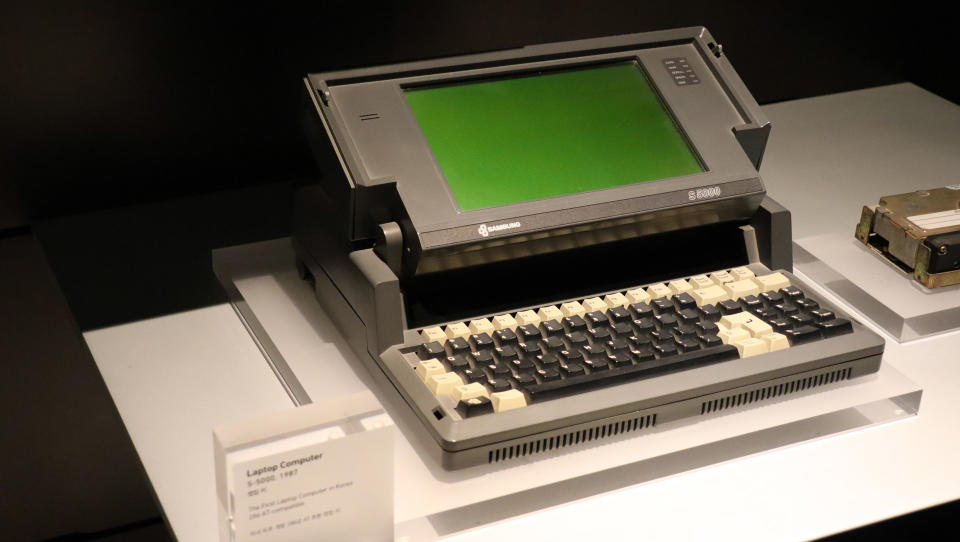
You might carry a computer in your pocket these days, but early mobile computing technology often looked just like this 1987 Samsung S-5000 Laptop Computer. The screen was monochrome, and the keyboard was essentially they same one you got with a full-sized desktop computer.
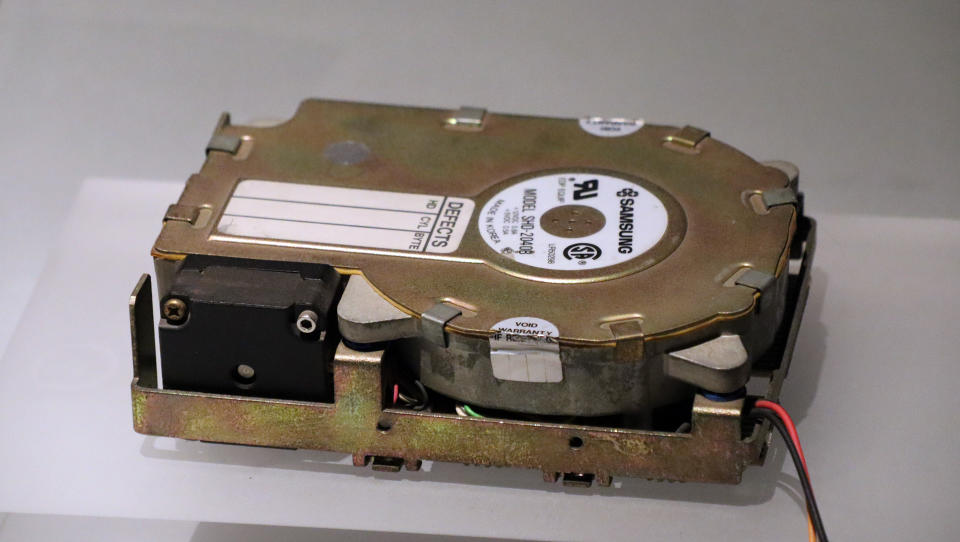
Technology couldn't get small and portable until companies like Samsung started shrinking components. Evidence that we have come a very long way is Samsung's first hard drive, this 48MB(!) model that's larger than two or three stacked Samsung Galaxy S23 smartphones.
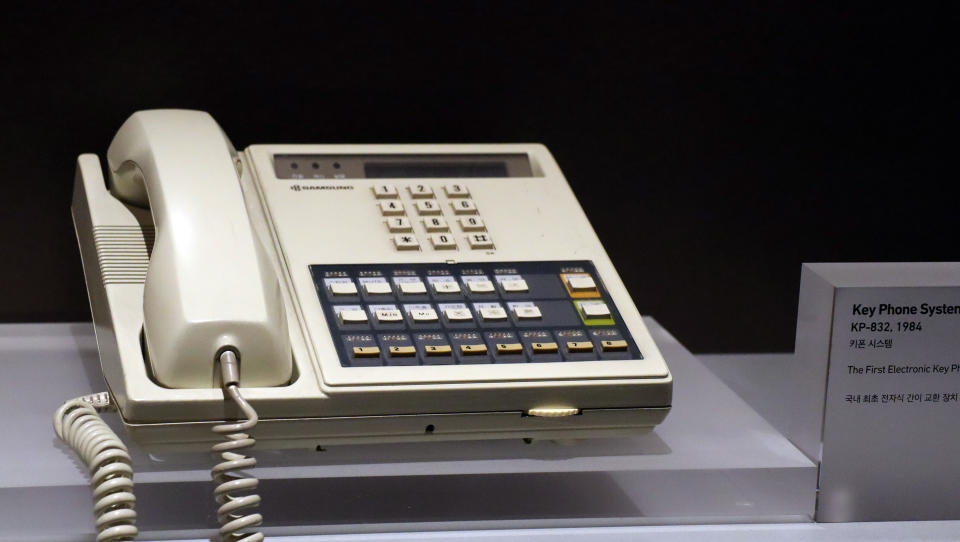
Office desk phones are quickly becoming a thing of the past, but this 1984 Key Phone system (the first electronic key phone in Korea) was fairly typical of the kind found on most desktops in the 1970s and 80s. Yes, you used all those buttons to store your most frequently-dialed lines.
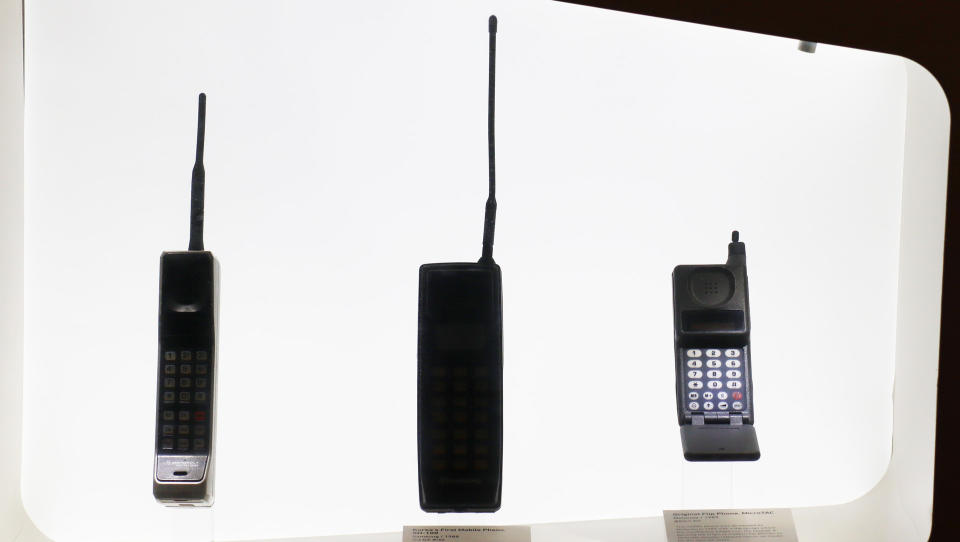
In case you've forgotten, this is what the dawn of the mobile phone era looked like. The original Motorola is on the far left, and a popular model from the mid-to-late 1980s is on the right. Sometimes I forget that we had to extend our phones' antennas before using them – now they're built into the body of the device.
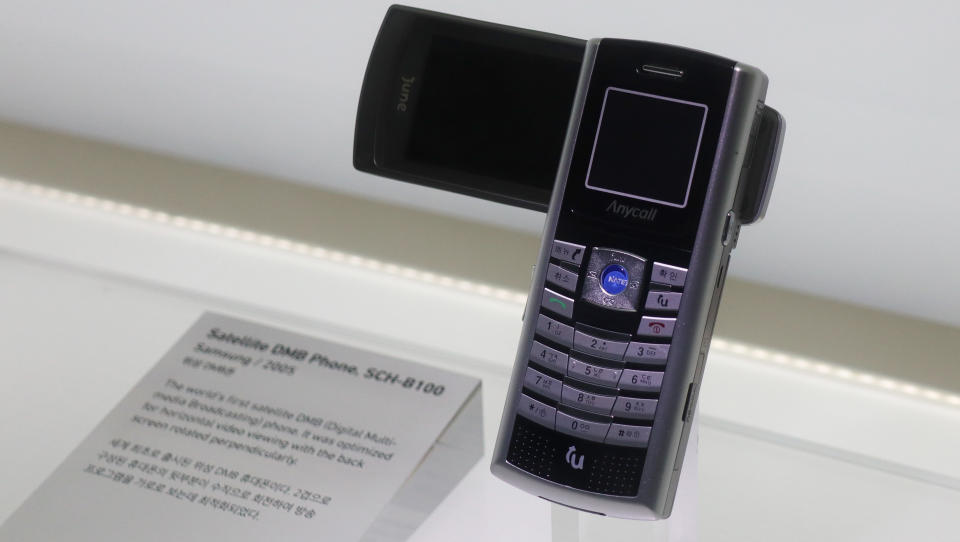
Sure, we didn't have big touchscreens and awesome cameras, but our old cellphones (often called feature phones) made up for it with unusual designs. Released a few years before the iPhone, the Samsung SCH-B100 had a 320 x 240-pixel display and one 1MP camera, but look at that cool flip-out-screen!
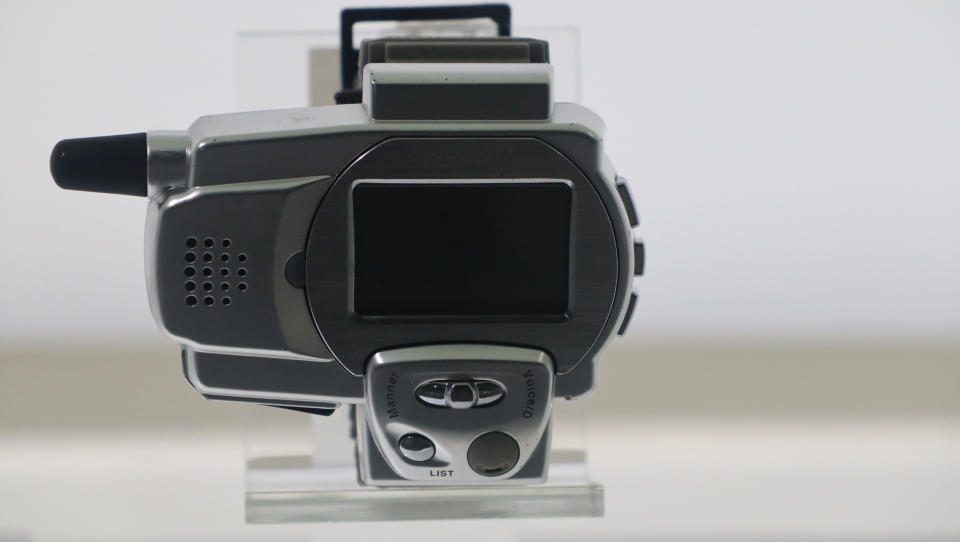
If you think it was Apple that came up with the idea for a watch that could double as a wrist-bound communicator, you're wrong. Look at this 1999 Watch Phone SPH-WP10 from Samsung. It basically looks like a mid-90s cellphone squished down to fit on your wrist. Ridiculous and loveable.
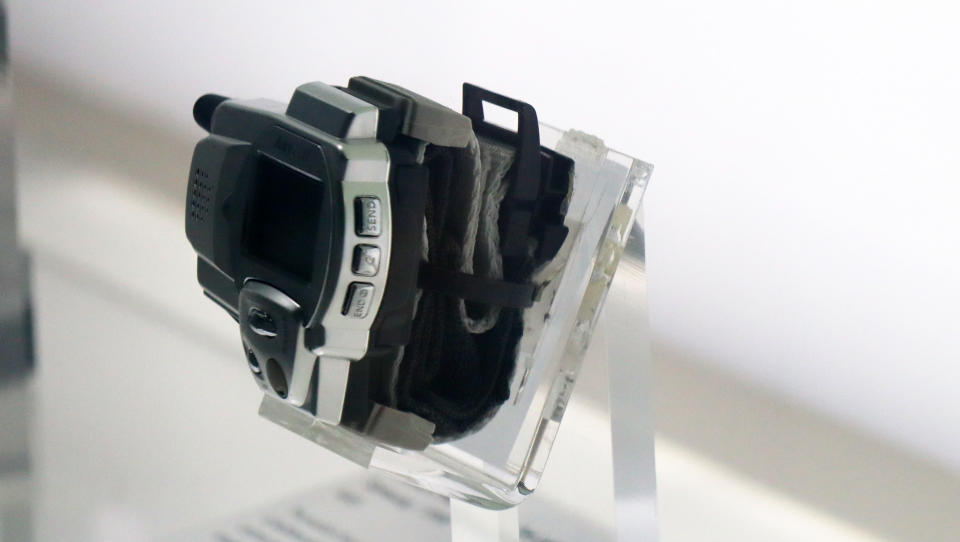
Another look at the Watch Phone.
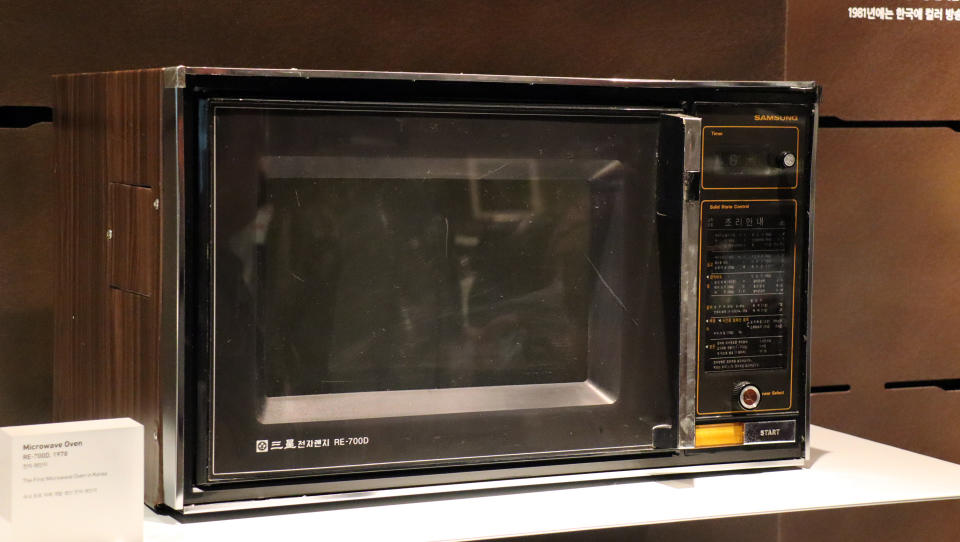
In some ways, Microwave technology hasn't changed as much as other consumer electronics. Still, this 1978 model (the first in Korea) is notable for its collection of physical buttons. It would be decades before everything would become solid state, paving the way for our world of touchscreens.
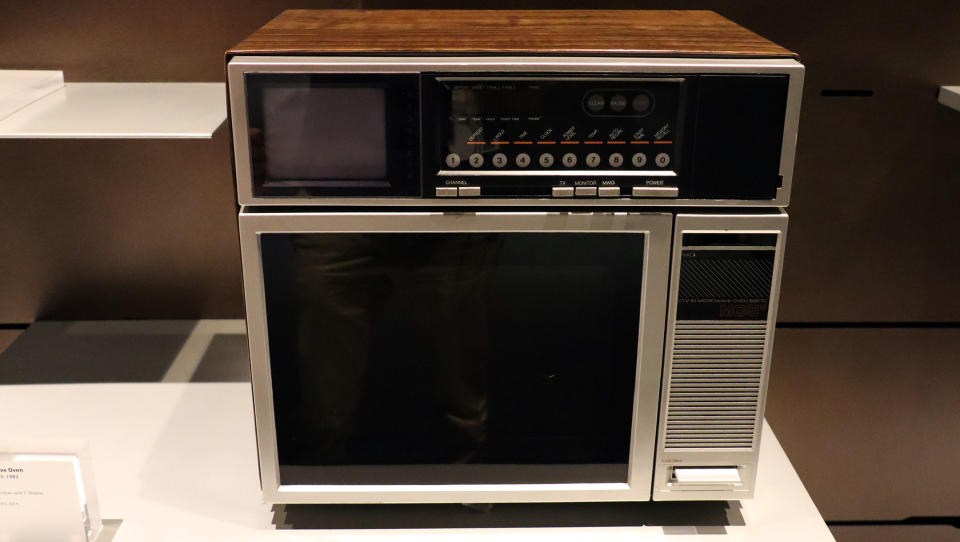
I love the concept of cooking and watching TV at the same time. This 1983 appliance is a ridiculous idea, but it's also one that paved the way for our multi-purpose devices that let you search, compose emails, and consume content all at once. We still can't watch TV on our microwaves, but our refrigerators can talk to us, and show us our photos and schedules on built-in displays.
There is a line you can draw from almost all of these classic gadgets to our current cutting-edge technology. There would be no Samsung Galaxy Z Fold 5. Galaxy Watch 5, Apple Watch 8, or iPhone 14 Pro without them.
I'm glad that we have the consumer electronics of today, but I'll always have an affection for the clunky designs and capabilities of gadgets past.

